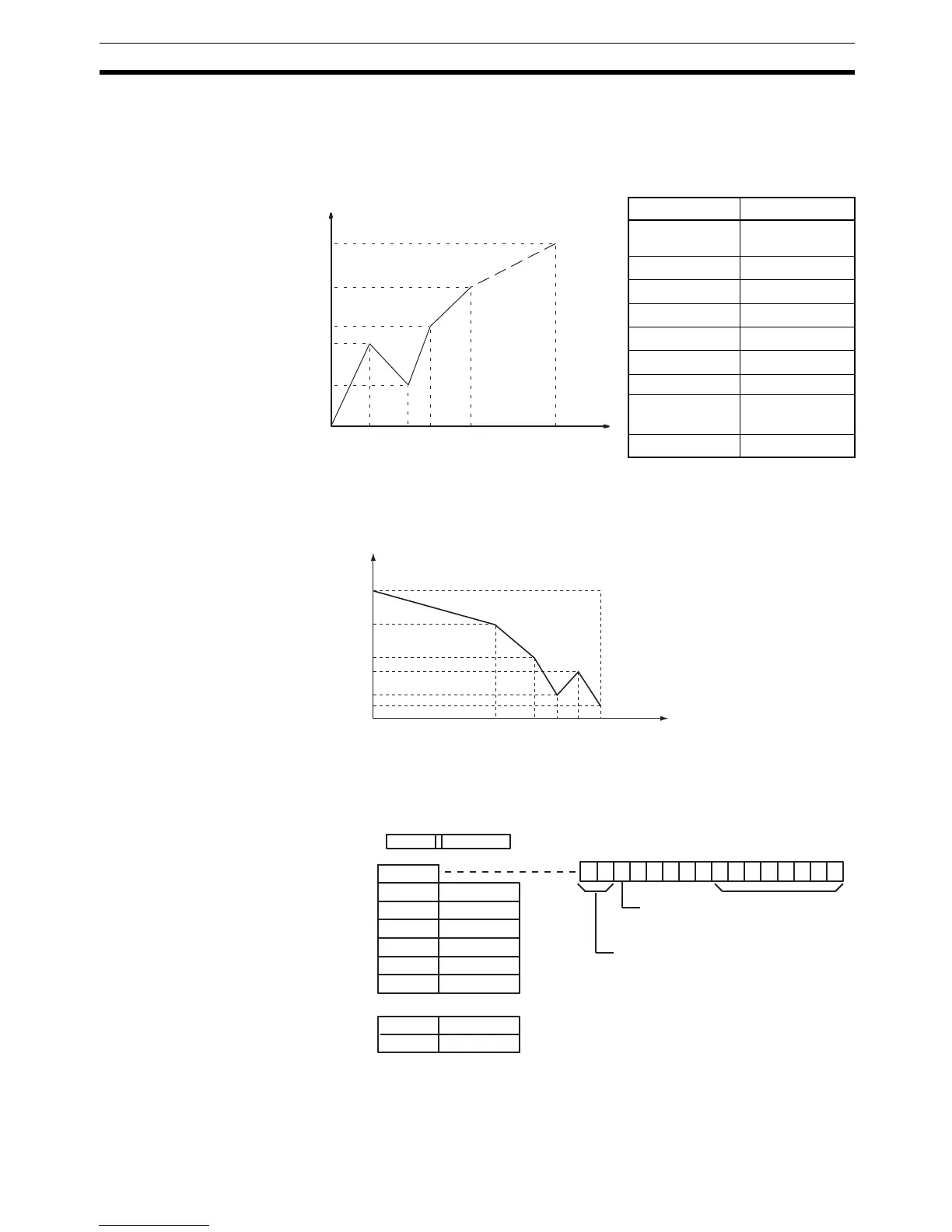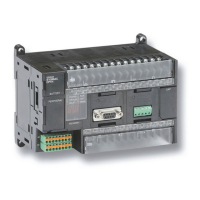579
Special Math Instructions Section 3-14
Linear Extrapolation (C: Word Address)
Using 16-bit Unsigned BCD or Binary Data
APR(069) processes the input data specified in S based on the control data in
C and the line-segment data specified in the table beginning at C+1. The
result is output to D.
•Y
n
=f(X
n
), Y
0
=f(X
0
)
• Be sure that X
n–1
< X
n
in all cases.
• Input all values of (X
n
, Y
n
) as binary data.
This example shows how to construct a linear extrapolation with 12 coordi-
nates. The block of data is continuous, as it must be, from D00000 to D00026
(C to C + (2
× 12 + 2)). The input data is taken from CIO 0010, and the result
is output to CIO 0011.
In this case, the source word, CIO 0010, contains 0014, and f(0014) = 0726 is
output to R, CIO 0011.
Word
Coordinate
C+1 Xm (max. X
value)
C+2 Y
0
C+3 X
1
C+4 Y
1
C+5 X
2
C+6 Y
2
↓ ↓
C+(2m+1) X
m
(max. X
value)
C+(2m+2) Y
m
Y
0
Y
2
Y
1
Y
3
Y
4
Y
m
X
0
X
1
X
2
X
3
X
4
X
m
X
Y
Y
Y0
Y1
Y2
Y4
Y3
Ym
X
0 X1 X2 X3 X4 Xm X
D00000 000B Hex
D00001 05F0 Hex
D00002 0000 Hex
D00003 0005 Hex
D00004 0F00 Hex
D00005 001A Hex
D00006 0402 Hex
D00025 05F0 Hex
D00026 1F20 Hex
0 0 0 0 0 0 0 0 0 0 0 0 1 0 11
15
00
x=S
X
12
Y
0
X
1
Y
1
Y
2
X
2
X
12
Y
12
Bit Bit
Content Coordinate
Output and input
both binary
(m–1 = 11: 12 line
segments)
↓↓↓

